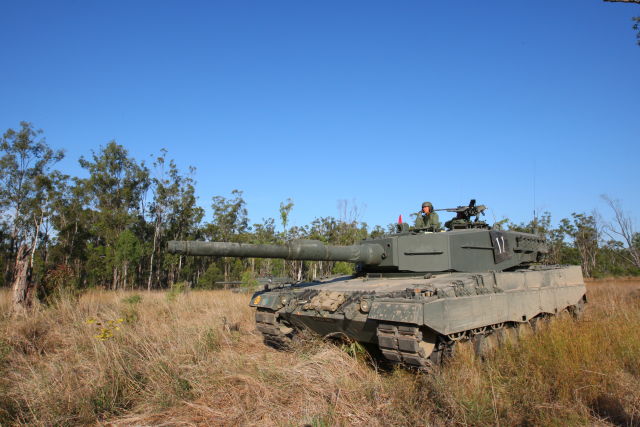On September 15, 2017, 3SG Gavin Chan died while participating in Exercise Wallaby, an annual unilateral training exercise in Queensland.
He died from multiple injuries sustained after the infantry vehicle (known as a Bionix) he was commanding rolled over.
And now, following a ministerial statement by Defence Minister Ng Eng Hen on Thursday (May 17) in Parliament, we know that Chan's death was, sadly, the result of consequences following decisions made on his part.
Addressed by Defence Minister
Ng delivered his statement in response to parliamentary questions filed by Workers' Party NCMP Dennis Tan and Nee Soon GRC MP Henry Kwek about the case:
Ng spoke about training-related deaths and addressed directly in his speech the circumstances leading to Chan's death, for which all investigative processes (both in Queensland by their local coroner as well as in Singapore by the external Committee of Inquiry that was convened) have been completed.Queensland Coroner's findings
The Queensland Coroner's report found that Chan died when he was "ejected from the vehicle which he was directing."
The Coroner's report described the specific sequence of events that took place after the Queensland police conducted an investigation:
- The vehicle's path forward was halted due to an obstruction, so Chan, commander of the vehicle, gave orders for the driver to reverse slowly down the hill.
- Chan was positioned in the turret of the vehicle, with his upper body clear of the vehicle structure. However, the SAF recommends that only the head and shoulders be outside the turret of the vehicle during operations.
- The driver continued to reverse slowly in accordance with Chan's instructions.
- The vehicle traversed over a flat granite rock before it became stuck on a large boulder, holding up the vehicle undercarriage.
- Chan instructed the driver to turn the steering wheel in an attempt to gain traction.
- The vehicle suddenly dropped down over the rock rolling sideways, and came to rest further down the slope.
- Chan was ejected from the vehicle as a result of the drop, and suffered significant injuries.
- Life support was commenced at the scene before he was airlifted to a hospital, where he was pronounced dead.
The report also stated that local police had found no defect with the infantry fighting vehicle, and the driver was driving in compliance with SAF policy at the time of the incident:
"... there was no suggestion that the driver was doing anything other than reversing very slowly, and at the specific direction of Sergeant Chan."
According to the report, the incident likely occurred because of the commander's decision to reverse on a slightly different path down the hill, coupled with the fact that he chose to be positioned with a part of his body exposed outside the vehicle.
"There is nothing to suggest that the incident is none other than a very unfortunate accident due to the nature of the difficult terrain and the operation then being performed."
Given these investigation findings, the Queensland Police found no basis to charge any individual.
Singapore COI's findings
Back home, a Committee of Inquiry (COI) was also appointed to investigate this incident, and their findings corroborated those by the Queensland authorities.
The COI is an independent team that determines the contributory events or persons leading to death, and makes recommendations to rectify lapses.
The COI determined that Chan and his platoon mates were sufficiently trained and qualified to participate in the exercise. Medical and safety coverage was also found to be adequate.
Ng added that the COI found no negligence, foul play or misconduct on the part of any individual.
Safety lapses identified
However, Ng said, the COI learned from its investigations that the Night Vision Device (NVD) on Chan's vehicle was not working.
SAF regulations state that night movement is only allowed for armoured vehicles without the use of NVD if the driver's hatch is open, and with the headlights on the vehicle switched on.
According to the driver, said Ng, the late Chan felt that the headlights "would give away their position to the enemy," however, and made the decision to continue training without headlights.
[related_story]
COI conducted interviews with SAF soldiers
Accounts from SAF soldiers involved in the exercise were also pieced together to determine the chronology of events leading up to the death, noted Ng.
The COI concluded that his death was due to the injuries resulted from him being thrown out of the vehicle as it overturned.
Chan's platoon mates also attested to Chan's "strong motivation and high standards of performance during training". Being zealous in his training, Ng said Chan probably wanted to complete the night mission assigned.
SAF follow-ups
Chan's death was classified as training-related, and compensation was offered to the family.
Since this incident, adds Ng, the SAF has followed up and implemented training for armoured vehicle commanders over uneven terrain.
Training safety regulations have been tightened to limit the exposure of the body of the vehicle commander to waist-level when executing certain operational tasks.
SAF has also implemented drills for day-to-night and night-to-day transitions. This includes checking that the NVD and other night fighting equipment are in working order.
The requirement to wear seat belts is also enforced with disciplinary actions taken against those who have not done so.
Top photo from MINDEF.
If you like what you read, follow us on Facebook, Instagram, Twitter and Telegram to get the latest updates.
